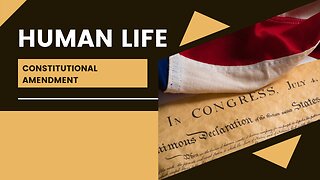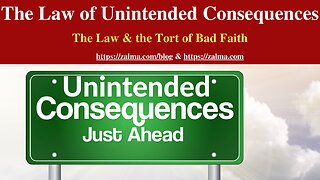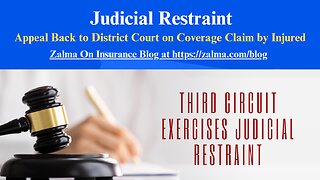Substantive due process – too much power
Substantive due process – too much power
By Terry A. Hurlbut
Today Clarence Thomas, the senior member of the Supreme Court, has drawn a lot of attention. Breathless leftist journalists, parsing the opinion in Dobbs v. Jackson Women’s Health Organization, lit on an interesting thing Thomas said. But they seem to have read only one thing: his mention of three particular precedents Thomas would like to re-examine. They missed the reason he gave, which is a doctrine he seeks to destroy: substantive due process.
Clarence Thomas would revoke substantive due process
To see Clarence Thomas’ actual remarks, read the Dobbs opinion, pages 117 to 123 inclusive.
Thomas summarizes thus:
Substantive due process conflicts with that textual command and has harmed our country in many ways. Accordingly, we should eliminate it from our jurisprudence at the earliest opportunity.
Thomas has said this for years, as he reminds us in his concurrence. The mainstream press quarrels with him because he names three specific precedents in which substantive due process played a role. Those precedents are Griswold v. Connecticut (1965), Lawrence v. Texas (2003), and Obergefell v. Hodges (2015). In all three, the Supreme Court declared fundamental, new “rights” that have not been fundamental for most of American history. The Court did the same in Roe v. Wade. Now that his colleague Sam Alito assembled a majority to overrule Roe, Thomas said in effect: let’s take this opportunity to look again at these new “rights” and determine whether they are “rights” at all.
Reaction of the media
Horrors, cry leftist activists across the land. The Financial Times and The Texas Tribune give the calmest, most balanced assessment of the opinion and the reaction. Both quote experts in Supreme Court case law, and offer perspective on Thomas’ earlier dissents – and now his majority opinions (as in New York State Rifle and Pistol v. Bruen) and concurrences (as in Dobbs). Both suggest that Thomas is trying to “push” the Court into reversing many rulings to which the right takes offense. But they do not touch on Thomas’ main objection to those precedents. That objection concerns substantive due process, the notion that the Supreme Court can create rights.
Substantive due process – what is it?
The best Internet sources to define substantive due process include Cornell’s Legal Information Institute, the Constitution Center, and Ballotpedia. In addition, Wikipedia tries to pull together definitions and history of the doctrine as the Supreme Court has applied it.
As Nathan Chapman at the Constitution Center tells us, substantive due process is likely an oxymoron. Due process of law was never supposed to grant any substantive rights. It merely guaranteed that the government follow the law before depriving someone of his rights under it.
Substantive due process effectively means that a person has certain rights so fundamental that he may never lose them, by any process. People call it substantive due process because a court has used the Due Process Clause of the Fifth (or, beginning with Reconstruction, the Fourteenth) Amendment to substantiate it.
The first case involving substantive due process is in dispute. Clarence Thomas and his fellow critics of the concept say it began with Dred Scott v. Sandford. In point of fact, Roger Taney, writing for the Court, specifically said that to recognize the slave Dred Scott as free for having set foot on “free soil” is to deprive Mr. Sandford of his “property” without due process of law.
Advocates for the concept point to Bloomer v. McQuewan (1952) as the first substantive due process case. The same Roger Taney who wrote for the court in Dred Scott, did so in Bloomer as well. Furthermore he made a due process argument there, too.
Further history
The War Between the States put paid to the notion from Dred Scott that any person had a property interest in another person. Immediately after the war and for the rest of the century, the Supreme Court did not use substantive due process. But beginning with Lochner v. New York (1905), they did. In that case the Court said a law setting maximum working hours for bakers violated freedom of contract. The Court essentially held that any person may contract with another, and offer any terms he pleases. The only restraint on this was that each contracting party must own what he offers. In the Lochner case, a baker’s time was his own, to offer as he pleased.
History offers little support for such an absolute freedom of contract. And by the Great Depression, that would change. Whether all the particulars of that change (for example, the Wagner Act) were good things, one can debate. But it took a threat by the President to enlarge the Supreme Court for Justice Owen J. Roberts to change his vote and start voting against the “contract” and “property” interests of employers.
But in 1965 substantive due process came roaring back. In Griswold v. Connecticut, the Court held that married couples had a right to any preparations or devices that would further their intimately private acts – in this case, contraceptive drugs and devices. That case preceded Roe and arguably laid its foundation.
Criticism
Clarence Thomas gives three main criticisms of substantive due process in his Dobbs concurrence. He holds, first, that the concept vests in a judge a power he ought not have. In essence, it makes the judge a philosopher-king, not an impartial arbiter. Second, it distorts other areas of law. Third, Thomas had the Dred Scott history to show how disastrously someone might apply it. It may – or may not – have been the first application of the doctrine. But it is the case that started a war that nearly destroyed the United States as a civilization.
Nathan Chapman gives his own objections. First, he objects to a court creating rights out of the whole cloth. Second, its history is relatively recent – in fact the Framers never mentioned it and likely had never heard or thought of it. Third, its use creates controversy – and Prof. Chapman seems to think a court ought to settle controversy, not create it. Chapman has a point. The first (or arguably second) use of the doctrine started a war. Then the second came close to turning the Court into a political and periodically enlarging institution. Of course, the third set of uses started the Culture War between defenders and detractors of American religious culture.
Additional criticism
CNAV notices three things these critics might not notice. First, an appellate court that can create rights can as easily destroy them. Indeed that’s exactly what it has done throughout the history of its application. In protecting Mr. Sandford’s “rights,” the Taney Court (Dred Scott) destroyed Dred Scott’s fundamental rights. Only utter, unvarnished racism can have informed Roger Taney’s opinion. (Understand this: there is not but one race: the human race. Scripture, especially Genesis chapter ten, makes that abundantly clear. Roger Taney flew directly in the face of that.) Similarly, the “right” of a mother to end her pregnancy before term, destroyed the rights of the baby she was carrying to live. Can that have been “due process of law”? Hardly. In both cases, the Supreme Court wrongly took sides.
Second, long after Thomas Jefferson lamented to Spencer Roane that
The Constitution has become a mere thing of wax in the hands of the judiciary, which they may twist and shape into any form they please,
along came substantive due process as the very instrument of that twisting and shaping.
Third, it lets an unelected body to decide what rights one has. Even Justice Kavanaugh, in his concurrence in Dobbs, objects to that.
The Constitution does not grant the nine unelected Members of this Court the unilateral authority to rewrite the Constitution to create new rights and liberties based on our own moral or policy views.
In sum: get rid of substantive due process
Clarence Thomas is right: we must get rid of substantive due process in our law and jurisprudence. Sam Alito punted on the issue. He said that substantive due process cannot go as far as the Roe court took it. But his only grounds for saying it, is that the Roe court created a controversy that never died. The Casey court, in 1992, tried to settle it but could not.
Thomas goes further: the doctrine itself is an invalid application of the Court’s appellate powers. The only ones who ought to “create new rights and liberties” are Congress, State legislature, Boards of Supervisors, etc.
But do human beings have any fundamental rights?
Fortunately the Constitution does enumerate many specific rights. We find them in the first eight Amendments. The Fifteenth, Nineteenth, Twenty-fourth, and Twenty-sixth enumerate others. Finally the Fourteenth Amendment incorporates all but the First Amendment as prohibitions against the States. (And why not the First? Because James G. Blaine found it advisable to propose a specific Amendment to force the States to disestablish their religions. See our discussion of the Carson case.)
The Ninth Amendment says that if the people do retain a fundamental right, the Constitution may not take that away.
Where does that leave us? Obviously if we cannot find a right in the Constitution, we have to look elsewhere. Sam Alito looked in American custom and tradition and found no support for a right of ending a pregnancy. But his critics (see the joint dissent in Dobbs) simply say it’s not their fault that the United States came late to a recognition of a fundamental right.
The Framers, and the Court at its inception, had no trouble understanding the fundamental rights of human beings. They might not have applied a consistent understanding, but they had a Source where they could look things up. That Source is Scripture. Again, John Adams said the Constitution was designed for “a moral and religious people.” And unlike substantive due process, Scripture is not a rubber band or stopper, but a Rock. That makes It far better as a Reference on fundamental rights.
Link to:
The article:
https://cnav.news/2022/06/26/foundation/constitution/substantive-due-process-power/
The Dobbs opinion:
https://cnav.news/wp-content/uploads/2022/06/Dobbs-v-Jackson-Womens-19-1392_6j37.pdf
Conservative News and Views:
https://cnav.news/
The CNAV Store:
https://cnav.store/
BitNext:
https://bitnext.app/landing/
-
 15:36
15:36
Declarations of Truth
11 months agoHuman Life Amendment – proposals and effects
2.85K -
 18:46
18:46
Declarations of Truth
3 months agoNew York provokes a Constitutional crisis
186 -
 7:22
7:22
Barry Zalma, Inc. on Insurance Law
1 year agoThe Law of Unintended Consequences
64 -
 8:21
8:21
SweetHomeStAugustine
1 year agoDOJ Request Case Dismissal
128 -
 2:03:48
2:03:48
Brent Allan Winters - A Common Lawyer Comments
7 months agoGod's Due-Process and Doom-Romans 11:33-36 InnChurch: Brent Allan Winters, CommonLawyer.com
61 -
 11:05
11:05
SweetHomeStAugustine
1 year agoSupreme Court Hears Case That Could Empower State Legislatures
104 -
 5:10
5:10
SweetHomeStAugustine
1 year agoSupreme Court Hears Case That Could Empower State Legislatures
155 -
 28:40
28:40
The Memory Hole
5 months agoWhen the Justice System Fails: No Presumption of Innocence (1974)
340 -
 7:02
7:02
Barry Zalma, Inc. on Insurance Law
11 months agoJudicial Restraint
49 -
 1:27:42
1:27:42
Vocational Science of Freedom
21 days ago🔵High Prerogative writs, Quo Warranto, Mandamus, Habeus - Use them to take down a State! 🦅
4833